
The country club, that kissing cousin of the city club, has long held a firm grip on America’s imagination.
It’s baked into our literary culture, for one thing. F. Scott Fitzgerald met his Zelda at a country club in Alabama. Henry Wadsworth Longfellow and Ralph Waldo Emerson founded their own Town and Country Club in Boston. (They wouldn’t let Frederick Douglass in.) It was Clyde Griffiths’ peek into “country club life” that set the stage for all the drama in Theodore Dreiser’s An American Tragedy. There’s a Mark Twain Country Club in Paris, Missouri. Caddyshack is still rented and positively reviewed 30 years later. And on a recent episode of the hit TV sitcom Fresh Off the Boat, the writers allowed the wife, a recent arrival from Taiwan, the thrill of a country club dinner. Millions of Americans can relate: It was what she dreamed life in this country would be.
No doubt: America has had a long fascination with the idea of these clubs. John Steele Gordon, in his 1990 American Heritage essay, found early references to these organizations as “the essence of America’s upper class,” and his report is fascinating reading. He starts with the early, sedate clubs and wends through time to the mid-to-late 20th century with its accent on golf and busy, busy, busy activity rosters.
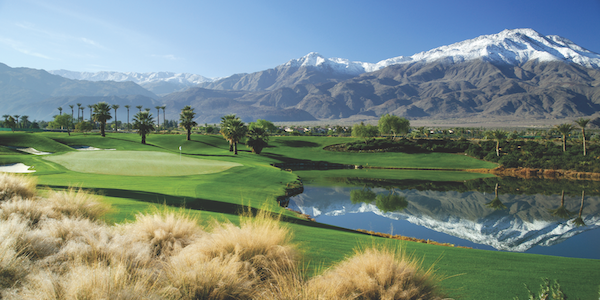
photo courtesy of andalusia at coral mountain
Andalusia at Coral Mountain.
This country club lifestyle, of course, is popular throughout the United States. The Country Club Managers Association estimates that today there are between 1.8 million to 2.1 million clubbers who belong to the 2,607 CCMA-managed clubs. No one has any firm figures on exactly how many valley residents are members, but they know what they’re getting:
For many, it is a way of life filled with friendly competitive golf, membership tourneys, Sunday evening buffets, galas, men’s grills, and all the other trimmings.
There’s a wide range of types of clubs here, and even within the types, there are many sorts of memberships. At some country clubs, simply by buying property, you become a member. But not always. Even if you bought a house, you still may have to apply for membership. Some clubs are casual about the application process; others have a more elaborate method of approving applicants. And then there’s the question of what kind of member one wants to be. There are full memberships, golf, “sports” (generally everything but golf), and social. “Nearly every club is different,” says one top valley Realtor familiar with the clubs.
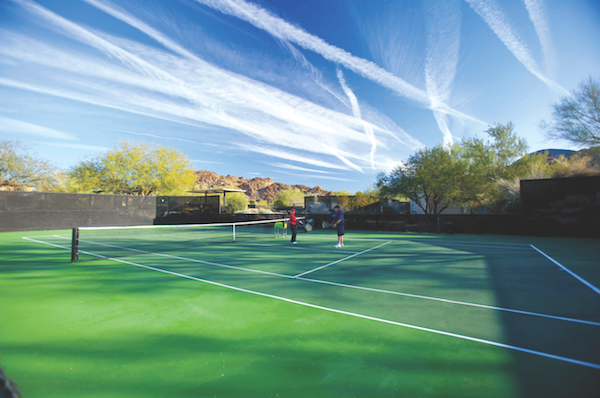
photo courtesy of the reserve club
The Reserve Club.
It’s safe to say that each club has a personality. Eldorado Country Club in Indian Wells is considered one of the most traditional of the desert clubs. Others are built around a certain glamorous lifestyle, such as Bighorn Golf Club in Palm Desert, home to more than a few celebrities and top CEOs.
Sometimes the membership is geographically determined: Marrakesh Country Club, for example, in Palm Desert, is the winter home for many part-timers from Springfield, Missouri; The Reserve Club in Indian Wells attracts many members from the Northwest.
And there’s now a new category embraced by country clubs, including The Vintage Club in Indian Wells. The prestigious club is just as much an “experience club” as it is a “golf club” — a recent trend seen throughout the valley.
Gordon’s research stopped in the 1990s, so one wonders what his history would look like now, 20 years on. Is golf still the glue that holds these organizations together? Are the country clubs still enclaves of homogenous groups? And are the children of current country club members getting ready to start paying dues?
Golf, Anyone?
Golf wasn’t the original sport behind the creation of the country club. In the beginning, from the 1880s onward, American clubs were the province of the equestrian community and, since horses are expensive, very selective in their memberships.
It wasn’t until after World War II, when even middle- and upper-middle-class American families were introduced to the concept of leisure time that the emphasis at clubs changed to the links.
The desert played a big part in this transformation: The concept of homes surrounding a golf course was first fashioned right here in the early 1950s when Thunderbird Country Club and Tamarisk Country Club — both in Rancho Mirage — introduced the idea. It became the template for most of the golf country clubs across the country that followed.
But now, as the clubs get closer to the third decade of the 21st century, a reliance on golf to draw membership is diminishing in the U.S.A. This 2008 headline in The New York Times might put the fear of the bogey-man into anyone still responsible for the health of a country club: “More Americans Are Giving Up Golf.”
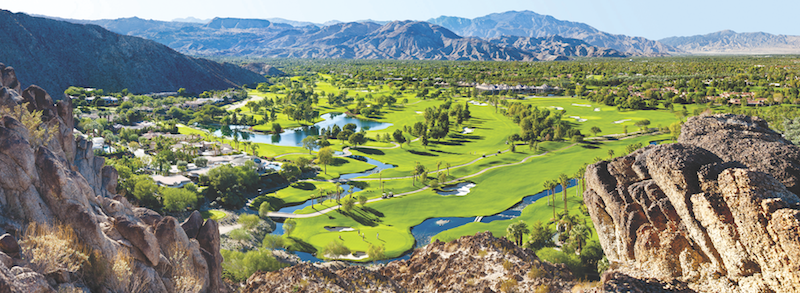
photo courtesy of the vintage club
The Vintage Club.
According to Times reporter Paul Vitello’s (admittedly somewhat dated) research, the number of people who play has declined or remained constant since 2000, dropping from 30 million to 26 million in 2005 — figures from the National Golf Foundation and the Sporting Goods Manufacturers Association. “More troubling,” Vitello writes, is “the number of people who play 25 times a year or more fell to 4.6 million in 2005 from 6.9 million in 2000, a loss of about a third.”
Golfers surveyed said the play was too slow — few working people have four hours at a time for leisure anymore. Fathers no longer desert the family over the weekend to play. Some also mentioned how difficult it is to get good at the game — which goes a long way toward explaining why so many lakes around the courses are filled with tossed clubs.
Adding to the local assault on the game lately is the California drought, so severe that it is inevitable that water usage for golf courses will cause some existential questions down the line, sooner rather than later in the Golden State.
Many, however, are ready with answers.
New courses being built, for example, are designed not to waste water. More and more, landscaping is more deserty than Orange County. The Reserve Club, for instance, created its course from the very beginning as a water-saver — drip-irrigation everywhere, small patches of grass as tees, and sand channels dug to allow wildlife to travel unimpeded. Why? As Duke University Fellow Michael Tennesen pointed out after his tour of The Reserve, “Developers, trying to attract dot-commers, heirs and heiresses, and sports heroes find that this new wealthy audience requires, no, insists, on living in environmentally protected areas.”
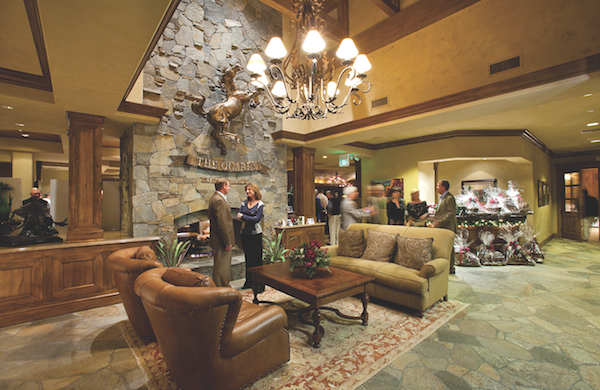
photo courtesy of the quarry at la quinta
The Quarry at La Quinta.
Inevitably, the desert’s water table will not be able to sustain nearly 125 golf courses. In the opinion of at least one executive, that will spell the end for some clubs.
And yet that may not be the end of the world. A country club without golf may sound odd, but around the country right now, interesting experiments are taking place. Some developers are repurposing golf course land for more housing now that the real estate market is again showing signs of life. That’s what they’re doing at Florida’s Williams Island Country Club, according to Bloomberg Businessweek.
An idea a little more far-fetched also surfaced in an issue of that magazine: A few developments around California, Arizona, and Hawaii are moving away from golf as an attraction and becoming farms, or rather land is being set aside for farms in developments. (Growing one’s own kale, seems pretty far from the desert’s country club demographic target. If one could breed Kobe beef, on the other hand … .)
All this doom and gloom may seem grim to the duffers who still love the game and find it a beautiful and camaraderie-sustaining outing, but a bad future is not a gimme, at least not in the Coachella Valley. Golf is not disappearing yet.
“Golf is still strong,” says John Cummings, speaking for Rancho La Quinta Country Club and Andalusia, both in La Quinta. “We’re pretty much holding our own, despite the horror stories.” The Vintage’s General Manager and Chief Operating Officer Steve Cenicola agrees: “We see consistent numbers year to year. In fact, golf rounds are improving over previous years.”
Clubs are being proactive, too.
At Rancho La Quinta and at Andalusia, for instance, some of the tees have been moved forward to speed up the game. “Because of that, our players’ handicaps are moving up,” Cummings says. “We are always working on other ways to keep the game exciting for those who love the game. It’s working.”
Toscana, a division of the Sunrise Company that built so many of the desert’s signature golf country clubs along Country Club Drive in Palm Desert — such as Indian Ridge, Palm Valley, and The Lakes — hit upon another good idea to generate interest in the game: “It’s the Divot Divas,” says Julie Bloom, VP of marketing, “and it’s for lady golfers who want to just play nine holes and ease into the game.” Toscana is also expanding its golf program, by the way: The club just completed the last holes on its North Course. “By November 15,” Bloom says, “we’ll have 36 holes.”
At Bighorn Golf Club, too, the picture on golf is especially promising. “Since January 2015, we have sold 19 new golf memberships and another four families have moved from ‘social’ to ‘golf,’ ” Membership Director Mike Grenier says. “We’re averaging about 26 new golf memberships a year.” So no decline? “Our rounds of golf have consistently stayed the same over the past five years,” and, although Bighorn sports two of the most interactive courses on the desert, he says, “we focus less on tough competition and more on low-key, themed, and socially engaging golf.”
Exclusively Theirs
That socially engaging thing always works in a country club. The whole idea of the country club from the beginning was to engage among one’s own kind.
As John Steele Gordon, the country club historian, points out, “Country clubs have two purposes. One is to provide facilities … the second is to distinguish those who are in from those who are out.”

photo courtesy of the bighorn golf club
Concert on the Bighorn Golf Club green.
This has led to a lot of “specialized country clubs,” such as the Mount Prospect in Chicago that counted mostly Mafia members among its ranks. Or Los Angeles Country Club, where there are few showbiz figures or studio moguls, or Hillcrest Country Club in Beverly Hills, where it helps, as funnyman David Steinberg once pointed out, to be “Jewish and a comedian.”
Here in the desert, for the most part, the main exclusionary methods employed by clubs these days have more to do with bank checks than background checks — and many of the social events benefit those less fortunate.
The statistics on these organizations’ philanthropic activity are staggering. Over the years, for example, Bighorn Golf Club Charities has raised $43 million for Eisenhower Medical Center, another $5.25 million for its Bighorn Behind a Miracle (BAM) fight against breast cancer, and a million and a half for Hurricane Katrina victims, and earmarked $400,000 this year to help military veterans enrolled at College of the Desert.
Julie Bloom of Sunrise points out that two Toscana members started the American Friends of our Armed Forces and that local schools are also benefiting from the generosity of its members.
Ironwood Country Club in Palm Desert, for another example, has adopted United Way of the Desert — allowing its South Course this past December to be used by the public for the first time so that the charity could stage a golf tournament there. (The course is home to the U.S. Open qualifier in May and is highly coveted.) The club will offer the course again this year.
At Indian Ridge Country Club in Palm Desert, General Manager and Chief Operating Officer Hall Wade reports that its annual Desert Cancer Foundation tournament recently finished its 21st successful year, having raised more than $4 million over the past two decades. “It’s almost impossible to determine how many millions of dollars our members have given back,” adds The Vintage’s Cenicola. “We don’t track those numbers — our members’ preference is to give without recognition — but the list of recipients is long.” They include Eisenhower Medical Center, the McCallum Theatre, Boys and Girls Clubs, The Living Desert, Palm Springs Art Museum, Animal Samaritans, and many others.
Charity often begins at home: One big area where club members spread their wealth is with the employees of the clubs in the form of college scholarships. The Vintage Club, for instance, established the Vintage Employee Scholarship Fund in 2005 to recognize the loyalty and service of its employees by assisting with their education as well as their children’s.
To date, Vintage Club members have voluntarily contributed more than $6 million to the fund, which provided more than $2.5 million to 278 students.
At The Reserve Club, Director of Membership and Marketing Mandy Middleton gets emotional when discussing the club employees’ scholarship program. “All of the recipients remark on how the scholarship is life-changing for them and their families. The stories literally make you cry.”
Future Members?
We know there’s a strong history of and tradition in country club living. But are younger people joining in and taking part?
There is some encouraging news on this front. Many country clubs in the U.S. are discovering that millennnials — who clubs thought were lost to the manor forever — have softened their attitudes. Historian Gordon discovered that many young people even in the 1980s went from “I thought country clubs symbolized an effete establishment” to “They give me a sense of belonging,” and that has accelerated.
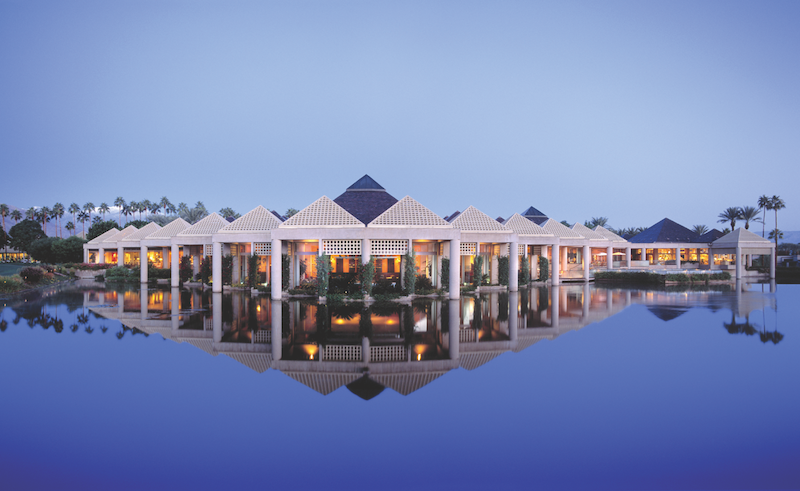
photo courtesy of the vintage club
The clubhouse at The Vintage Club in Indian Wells.
Richard Kopplin, partner in Kopplin and Kuebler, the company that headhunts country club executives, knows a lot about these trends. “What we’re seeing now is that if country clubs want to attract younger members, the two strongest trends are family involvement and fitness,” he says. Kopplin, who earned The BoardRoom Magazine’s Lifetime Achievement award in 2011, continues: “Especially family involvement. Millennials are forcing clubs to do things a little differently now. Young people don’t want to play golf for four hours anymore,” he says. “The trend now is nine-hole golf or six-hole golf or even three-hole golf.” And he echoes the thoughts of Bighorn’s Grenier: “It’s about more than competition now; even golf should have a social component.”
John R. “Jack” Sullivan is the director of strategic planning for Kopplin and Kuebler and works with 50 different clubs around the country, in addition to visiting 125 of them. His job is to look ahead 10 to 15 years and see what the newest prospective members of country clubs are looking for.
“When managers used to tour potential members,” he says, “for a long time, it was the husband who made the decision. Then later it was the husband and wife. Today, the smart managers are taking the entire family on the tour.”
As to what turns on the family members, he says: “I’ve been working with a club in North Carolina where the average age of member is about 42. The biggest thing that club did was create a whole new pool complex. Members now want to feel more like they’re visiting a Ritz-Carlton or a Four Seasons and not just a country club. Getting the children engaged is what will drive the growth among these millennials.”
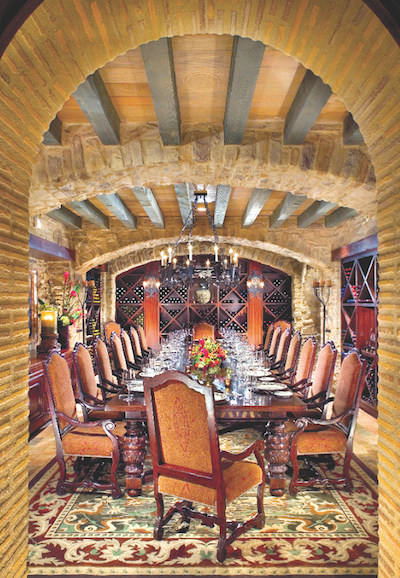
photo courtesy of toscana country club
Private duning at Toscana Country Club in Indian Wells.
For desert clubs, this means creating environments both for young families that are moving to the desert as well as for grandma and grandpa, who entertain their far-flung relatives on weekends and holidays. Desert clubs are preparing a whirlwind of activities these days for them.
The Vintage Club has been at the forefront of this idea for years, offering full membership privileges for every member of the family. (As with a resort, there is poolside food service, for instance.) They get creative: The club recently arranged for a demonstration of the actual Mars Rover to be exhibited to members and their kids.
Bighorn Golf Club, also at the forefront of family-oriented ideas, has created a “Kiddin’ Around” children’s play park, more than a dozen family activities, and a thriving junior golf program. And every December, it presents something called the “Blizzard Blast,” where 150 tons of snow are imported onto the driving range for sledding. The Blast also included a zip line, a laser tag game, bungee jumping on trampolines, and a 20-foot mountain to climb. No child will think of a country club as fuddy-duddy after that.
More activities crowd the country club calendars these days as a nod to keeping members engaged. Sparkling fitness studios, gym classes with in-house trainers, dieticians on staff, Ping-Pong, bocce ball, and even the latest craze at desert clubs: pickleball.
“Pickleball has taken off like crazy,” reports Erika Byrd of the Andalusia team. (For the uninitiated, pickleball, invented on Bainbridge Island in Washington and named for the inventor’s dog “Pickles,” is like tennis but with larger paddles. With a wider surface than a mere racquet, it increases the odds that even those who may not make the circuit can enjoy the volleying.)
Since the millennial experience doesn’t just focus on the physical, many other clubs are also now arranging for “enrichment” programs at their clubhouses, setting up lectures and programs that feed a more spiritual need.
It’s baby steps, getting these young people to join. But Cenicola at The Vintage is optimistic: Because many of the children here grow up with other members’ children, “they develop a unique bond,” he says. “That bond will be with the club for many years.”
Does that portend Coachella fest days at Eldorado one day in the future? “Maybe,” says Geoff Hasley, GM of the club, with a smile. “But when they come to dinner, I hope they’ll still wear a sport coat and a collared shirt.”